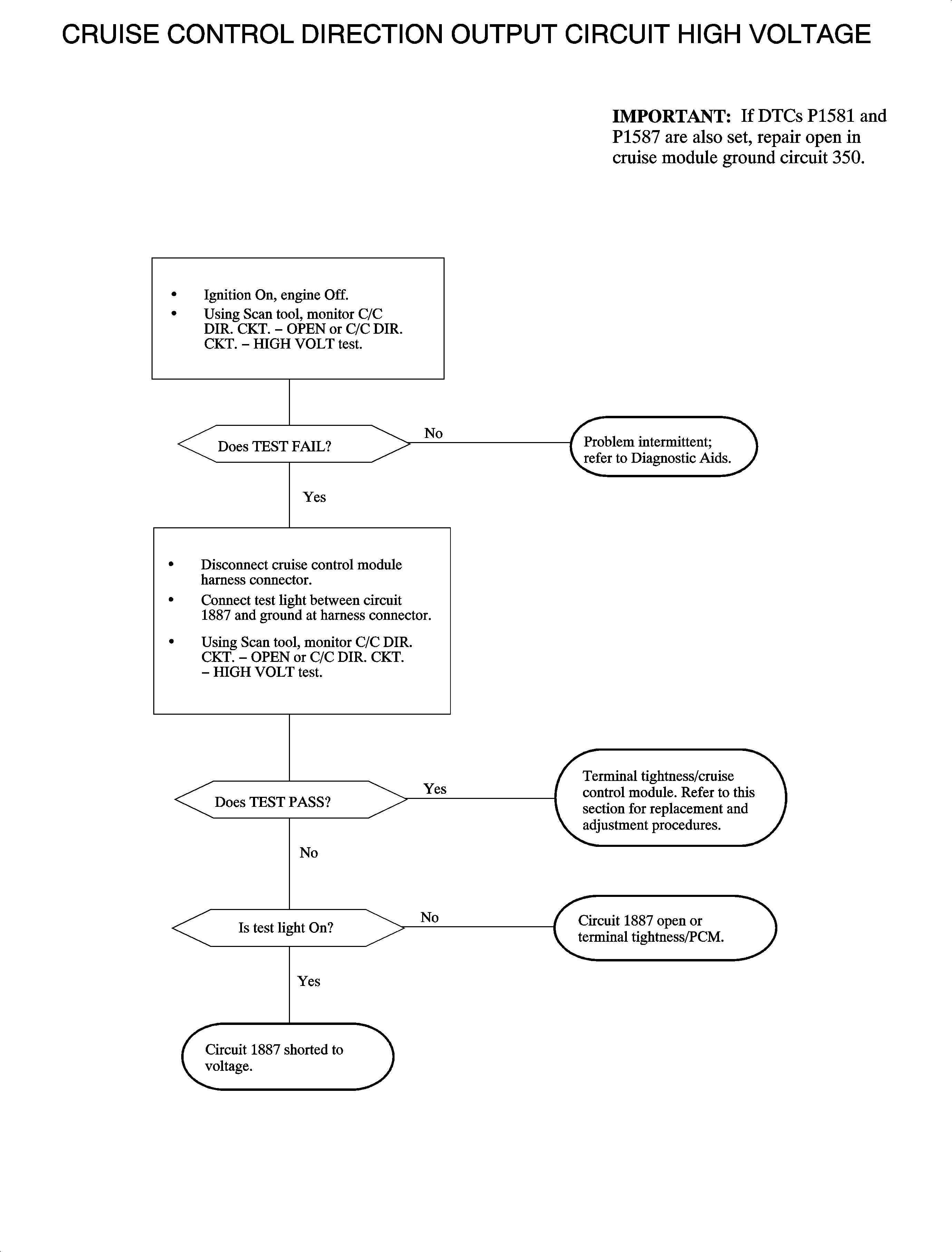Cruise Control Direction Output Circuit High Voltage

Circuit Description
The cruise control direction circuit is used to indicate to the cruise control module the direction of the accelerator pedal (toward wide-open-throttle [WOT] or toward idle) needed to maintain cruise set speed. The powertrain control module (PCM) supplies ignition voltage on the cruise control direction circuit during cruise control operation when the needed direction is toward WOT. After the cruise set speed has been met and the direction toward WOT is no longer needed, the PCM will open the driver and the cruise control direction input at the cruise control module will go low. Under steady cruise control when no pedal movement is needed, the PCM defaults to the idle direction. The PCM monitors the cruise control direction circuit for low and high voltage faults. DTC P1583 sets when the cruise control direction circuit is commanded Off, and the feedback voltage at the PCM is high.
Conditions for Setting the DTC
DTC P1583 will set if the cruise control direction feedback voltage is greater than 2.5 volts with the cruise control direction commanded Off when:
| • | The condition exists for longer than 500 milliseconds. |
| • | The ignition is On. |
DTC P1583 diagnostic runs continuously with the ignition On and the cruise control direction commanded Off.
DTC P1583 is a type D DTC.
Diagnostic Aids
To locate an intermittent problem, use the scan tool to monitor the C/C DIR. CKT. - OPEN or C/C DIR. CKT. - HIGH VOLT test with the ignition On, the engine Off. When a fault (an open or a short to voltage) exists, the scan tool will display TEST FAIL for both tests.
The tests will fail only when the device is being commanded Off and the voltage at the PCM is high. The tests update every 100 ms whenever the ignition is turned On and the device is being commanded Off via the scan tool or the PCM.
Loss of cruise control module ground can also set this DTC. If this condition exists, DTC P1581 and P1587 will also set.

